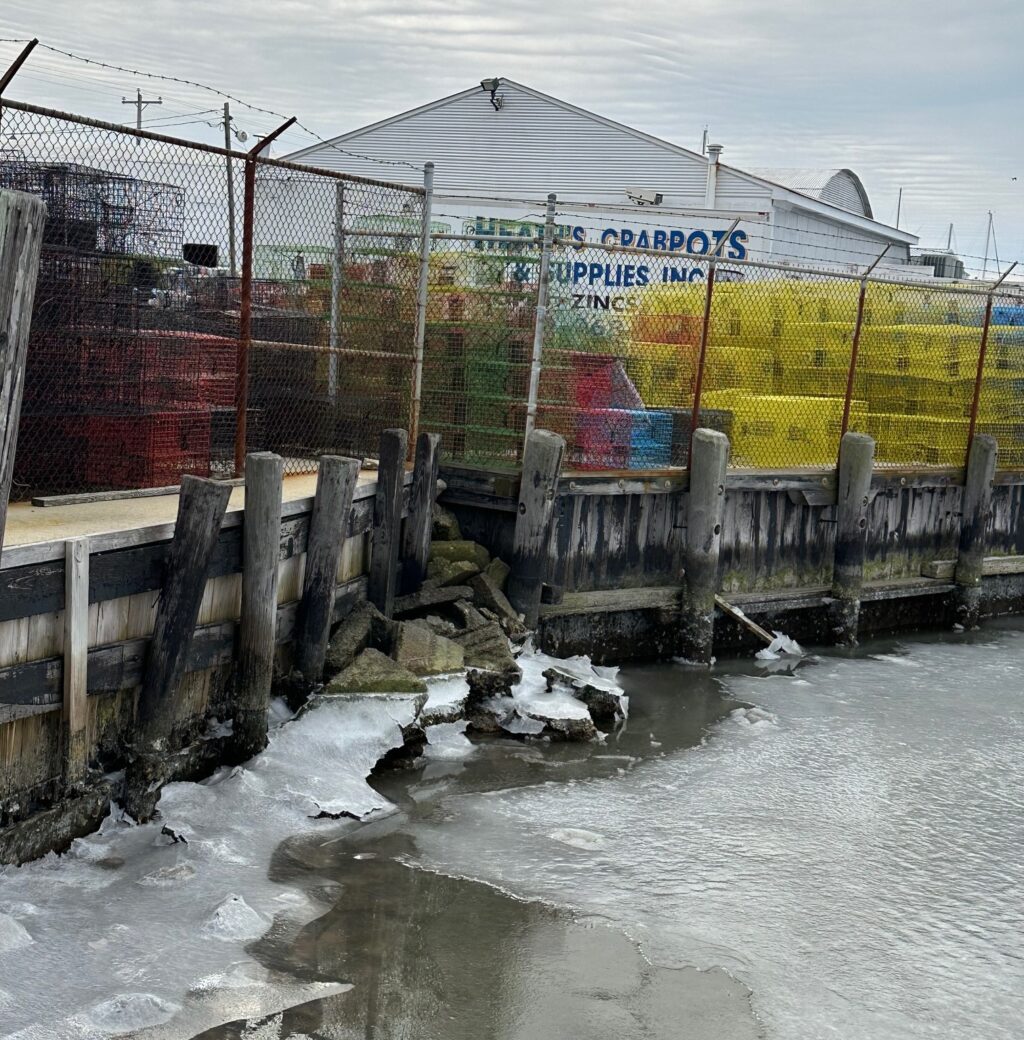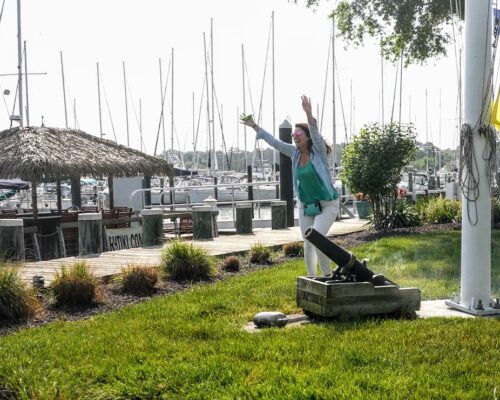How does a crab pot business stay strong when you do everything by hand, reject the use of technology, and watermen get scarcer over the decades? CBM contributor Pat Piper went to Crisfield, “Crab Capital of the World” to visit Heath’s Crab Pots and find out.
Eddie Heath has a lot on his mind. There’s a stack of crab pots with shipping labels ready to be sent to North Carolina, and a customer needs 100 cull rings used to prevent small crabs from being caught, 100 hooks, and 3 pounds of stainless steel staples that keep crab pots (also called cages) together. Someone else needs a few zinc anodes for their saltwater pots.
History is present in this bustling business. Heath has been building crab pots in Crisfield since age 16 (he turns 73 this year). And the very place where he works today was the original site of famed Carvel Hall in 1921. Back then the former blacksmith shop sold oyster and crab knives, which are considered the gold standard on the Chesapeake Bay. In 1951 a fire forced Carvel Hall to relocate a few miles away. Today, Heath’s Crab Pots on Main Street is the go-to for crab catchers from New York to Texas.
Doing Business the Old-School Way
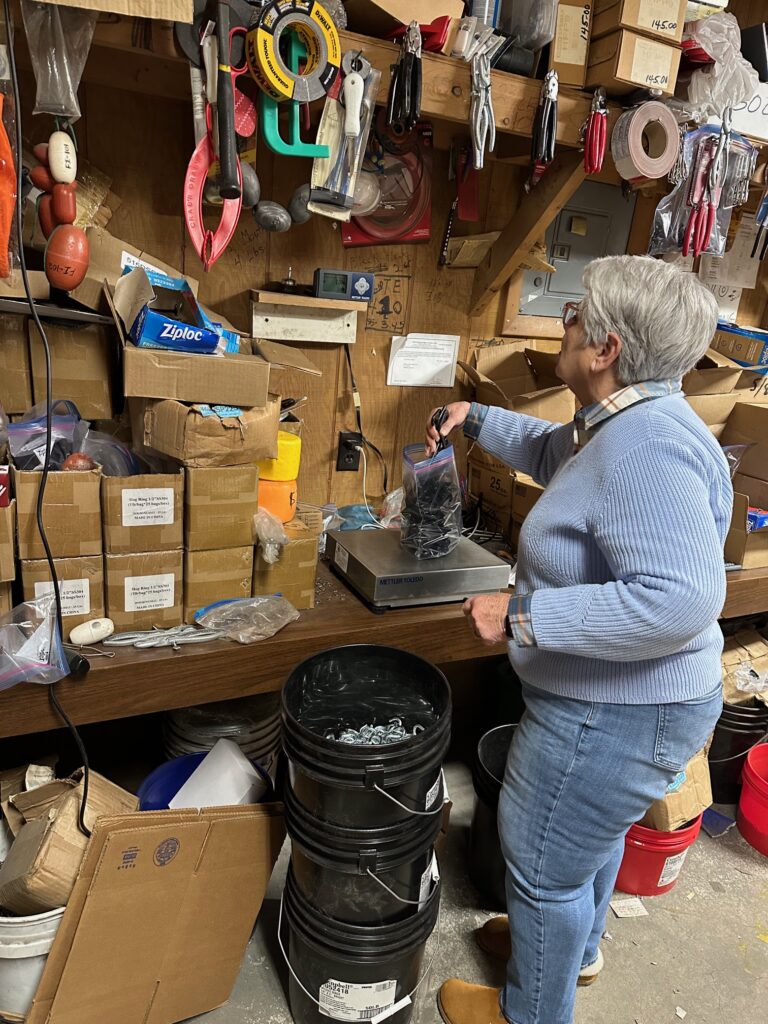
“I don’t use a cell phone, I don’t know how to use a computer,” Eddie Heath says with the straight face he is known for. “If you want a receipt, I write it on a piece of paper and give it to you. If I had an education I’d be dangerous.”
He may not have attended college but his wife, Sue, is a former nurse. She says that in their marriage, opposites attract. But she also attributes their ability to work side by side to a skill she acquired during her nursing years: “Patience.”
And it works. Their crab pot business remains strong as they meet demand for a variety of needs. Cages are built for hard crabs, like the prized Chesapeake Bay blue crab, in a variety of sizes. Others cages are designed for peeler crabs that are used for bait or eventually become the popular soft shell delicacy. Some watermen prefer a specific color depending on where the pot will be used: yellow for shallow, sandy water and green for a bottom with vegetation and seaweed.
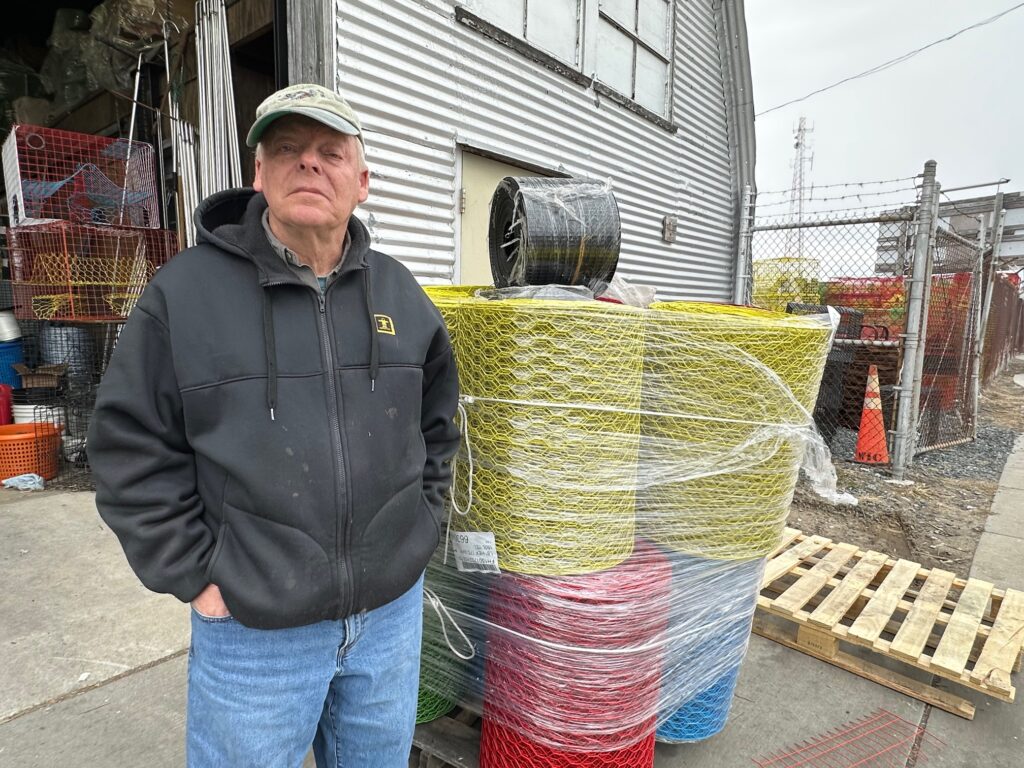
Crab pots need a weight to keep them in one location on the bottom because of tides and currents, so heavy metal rebar is secured along the bottoms of each. Since Heath’s serves crabbers from up and down the East Coast, Eddie has had to adapt to differences in the vernacular of each region, especially when it comes to rebar. “Here in Crisfield we call ‘em ‘frames’. In New York they’re called ‘shoes’ and south of here they’re called “irons.” He can speak their language.
Eddie Heath isn’t big on accolades or recognition, but he does say that he has earned his success by sticking with what he knows.
“I was around six years old and caught crabs with chicken necking,” he recalls. “That’s wrapping a piece of line around a chicken neck, putting it in the water from a dock, and after a while slowly pulling the line up with (hopefully) a crab hanging onto the bait and catching it with a net. That’s all I knew what to do.” He had a stint in 1968, working at the local A&P grocery store in Crisfield for $1.25 per hour, but soon learned he could make more money with a crab trap.
The First Crab Pot
The modern-day crab pot has roots along the Bay in the early 20th century. In 1928, Benjamin F. Lewis was trying to figure out a better (and easier) way to catch a blue crab. He wasn’t alone. The Northern Neck, Virginia, waterman knew there were lots of crabs in the Yeocomico River, a tributary of the Potomac River. As noted in historian Larry Chowning’s 1990 book, Harvesting the Chesapeake: Tools and Traditions, Lewis came up with the idea of a crab pot using chicken wire. He tried it a few times, finding numerous blue crabs inside the wired cage. Ever-vigilant watermen saw his idea too and soon, his crab cage was in use throughout the nearby waters. Lewis applied for a patent on his idea and obtained a second patent ten years later for a design that is much like the crab pots we see today. Eddie Heath says little has changed over the decades. “The crab pot I built in 1969 isn’t any different than the crab pot today.”
Terry Pehan, a “come here” (lower Eastern Shore-speak for a new resident) for more than 20 years, says, “Eddie is a force to be reckoned with, but under that gruff exterior, he’s just a real teddy bear. Eddie and his wife Sue are foundational supporters of working watermen throughout the Eastern Seaboard. Eddie gives a lot, but you’ll never know it.”
Crisfield Mayor Darlene Taylor has similar thoughts. “Eddie Heath’s business is the backbone of the legacy of our community, making crab pots. But not only is he a pillar and an important staple that helps to drive our local economy, but he is also an extremely generous, silent supporter of so many people, activities and events in our community.”
At any given time in Heath’s shop, as many as 14 people are at work making each crab pot by hand. This includes the bait basket, the bridge wire dividing the pot that keeps crabs at the top of the cage, the entrance and escape funnels, and the “frame”(rebar) placement.

Eddie and Sue Heath represented Maryland during the 2017 Made in America Week and traveled to the White House for recognition of their efforts to support “buy local” initiatives. After meeting President Donald Trump there was some talk about sending a few crab pots to Mar-a-Lago. It hasn’t happened…yet.
Crisfield, Maryland’s southernmost town, continues to use the slogan “Crab Capital of the World.” It is home to the National Hard Crab Derby every Labor Day with crab races, crab picking and cooking contests. There’s also the Governor Tawes Crab & Clam Bake held later in September.
And there’s Eddie Heath. No slogans. No races. No contests. And no cell phones.
But he’ll help you catch a crab.
Made on the Bay
While the Heaths aren’t the only Bay crab pot manufacturer, they’re one of the larger suppliers in the mid-Atlantic to do it by hand.
Many of the marine supply stores provide crab pots for Chesapeake Bay amateur crabbers, but most are made outside of the area. Still, the build-it-local feeling is at work. Joey Dixon of Ocean Products in Diggs, Virginia, says his company bought Coopers Crab Pots in nearby Hampton and sells the supplies needed to make them to the builders or to the watermen. “We have people calling asking about Coopers or if we are going to start delivering to Hampton again. After we closed it, we still ran a truck to Hampton once a week, and the people got used to it. If things hold out, we will start to deliver supplies there again this spring.”
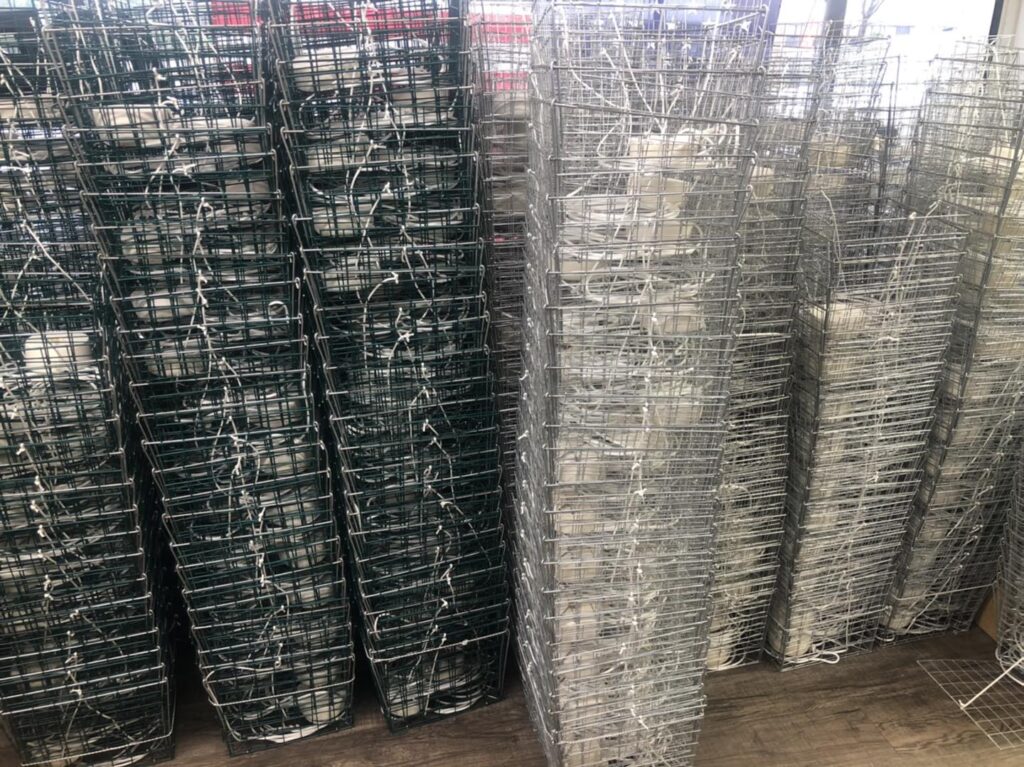
Lewis Myers builds crab pots by hand in Virginia Beach and makes them out of galvanized wire, as does Jamie Thomas in Westover, Maryland, near Crisfield. Bay Country Crabbing Supply in Deale, Anne Arundel County, builds only the collapsible ones themselves.
Building crab pots sometimes serves as a retirement career for watermen who have hung up their white boots. Dixon says, “There are guys that are retired from the water that make them for the crabbers, and some of them make a lot.”

